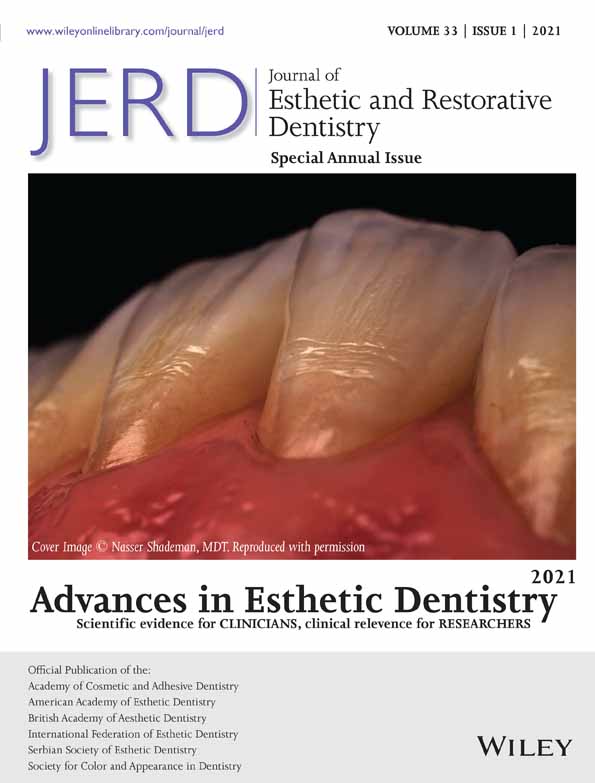Composite veneers: The direct–indirect technique revisited
Abstract
Objective
This article provides an update on the direct–indirect composite veneer technique.
Clinical considerations
Composite veneers have long been used as a conservative and esthetic treatment option for anterior teeth. While they are generally performed using a direct technique, there has been renewed interest in the direct–indirect composite veneer technique because of its advantages and broad indications for restoration of tooth color and morphology. In the direct–indirect composite veneer technique, the selected composites are initially applied on the tooth using a layering approach, without any bonding agent, sculpted to a primary anatomic form with slight excess, and light-cured. The partially polymerized veneer is then removed from the tooth, heat-tempered, and finished to final anatomy and processed extra-orally before being luted. Advantages of this technique include enhanced physical and mechanical properties afforded by the tempering process, unrivaled marginal adaptation, enhanced finishing and polishing, and the ability to try-in the veneer before luting, enabling a shade verification and modulation process that is not possible with the direct technique. The direct–indirect approach also affords enhanced gingival health and patient comfort.
Conclusion
This article reviews the direct–indirect composite veneer technique, and outlines critical steps and tips for clinical success.
Clinical significance
The direct–indirect technique for composite veneers combines advantages of the direct composite placement technique with those of the indirect veneer technique, including operator control, single-visit fabrication and delivery, increased material properties, and excellent esthetics.




